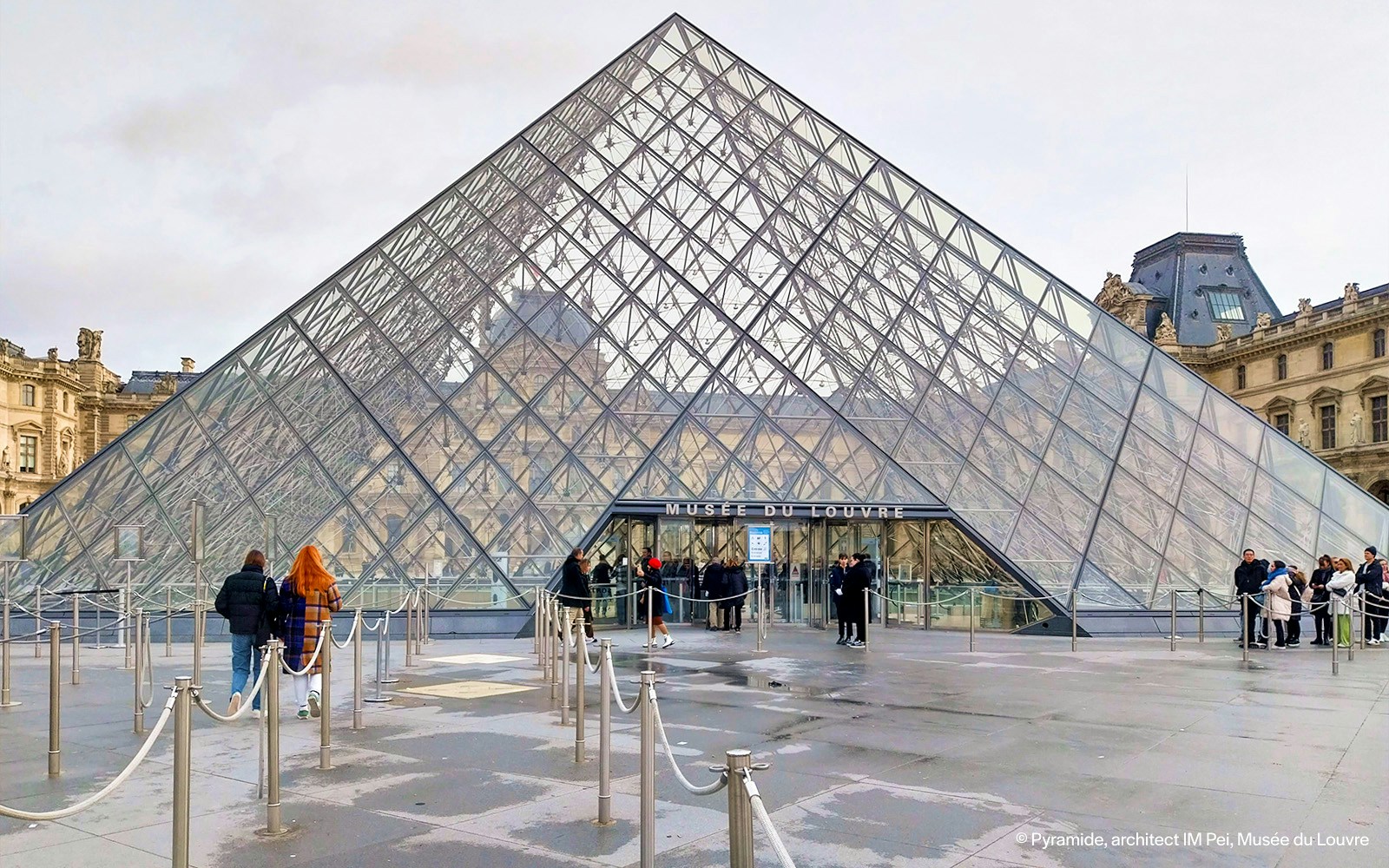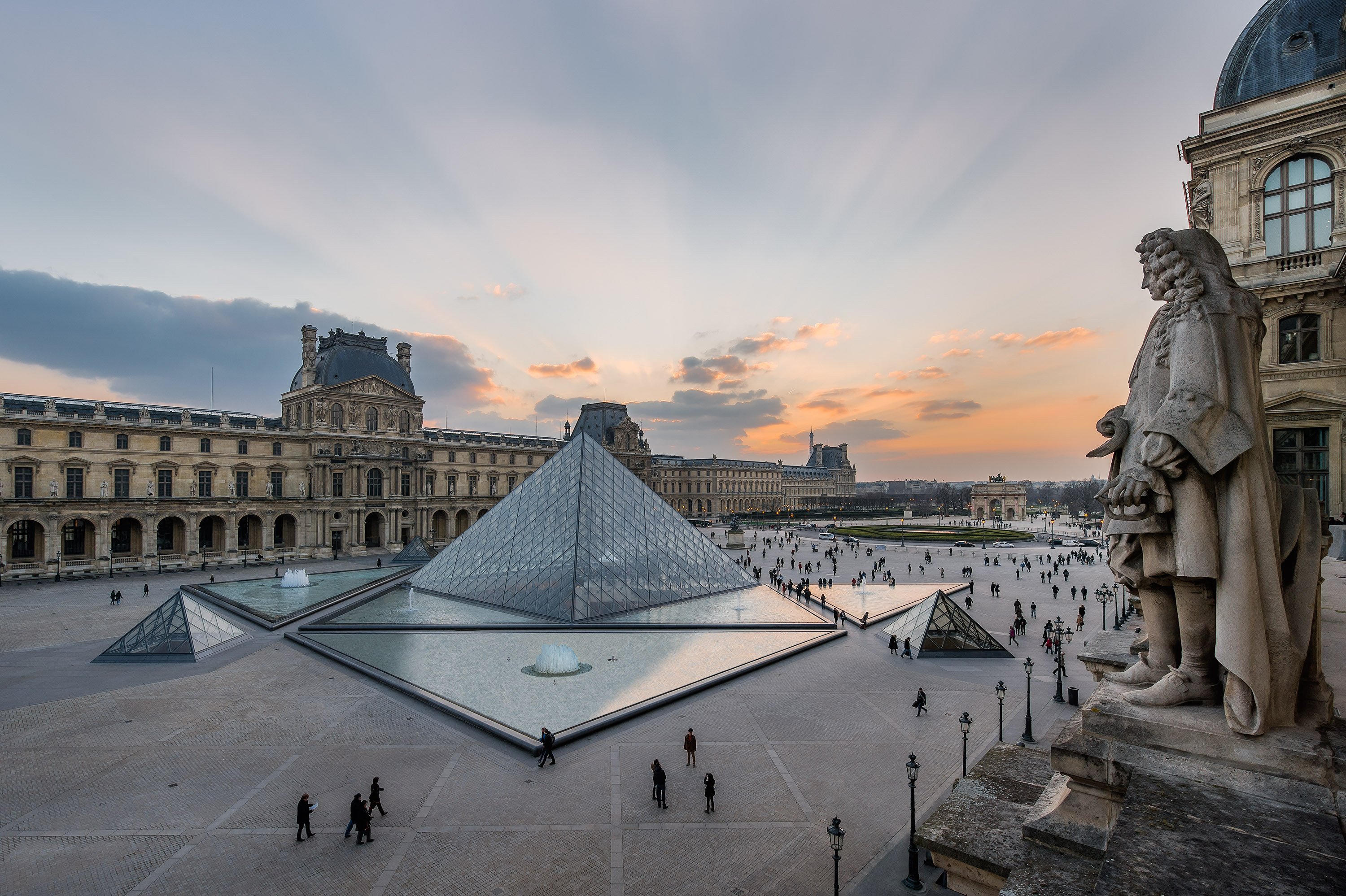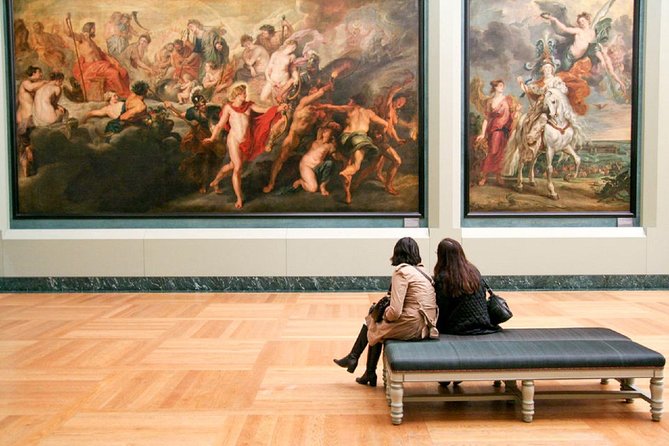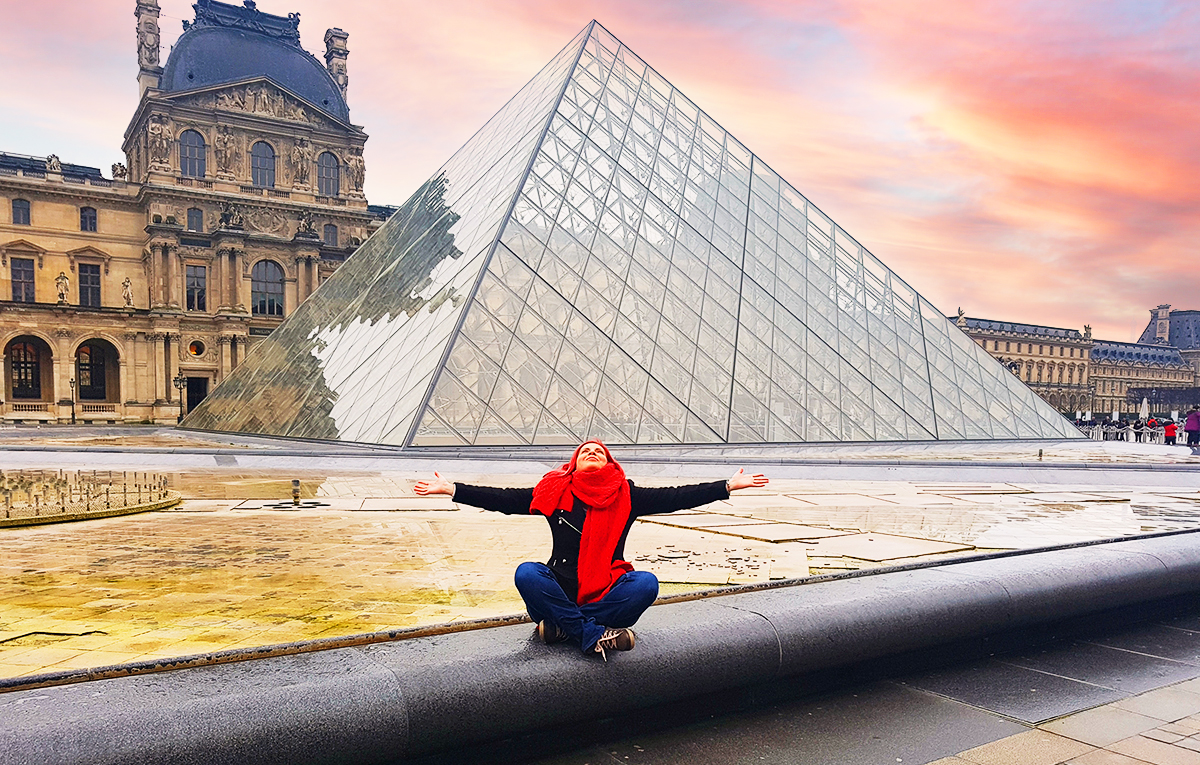
Introduction
Overview of the Louvre Museum
The Louvre Museum, nestled in the heart of Paris, is not just a gallery but a historical landmark brimming with extraordinary art. Housing over 380,000 works, it encourages visitors to embark on a captivating journey through time. Whether you’re captivated by ancient sculptures or Renaissance paintings, the Louvre reveals the entirety of human creativity.
Importance of the Louvre in the Art World
As the world’s largest art museum, the Louvre serves as a beacon of inspiration for artists and art enthusiasts alike. Its significance includes:
- Cultural Heritage: Preserving masterpieces from various eras.
- Influence: Shaping trends in art and aesthetics globally.
- Education: Offering resources and programs to educate the public.
Many consider a visit to the Louvre a rite of passage, echoing the sentiment that art transcends time and space, connecting people through shared human experiences. The museum’s allure lies in its ability to evoke emotions, provoke thoughts, and inspire creativity, making it an essential pilgrimage for anyone passionate about art.

History and Architecture of the Louvre
Origins and Evolution of the Louvre
The Louvre’s story begins in the 12th century as a fortress guarding Paris from Viking invasions. Over centuries, it evolved from a royal palace into a public museum in 1793, democratizing art access. Each transformation reflects changes in monarchies and societies, showcasing the rich tapestry of French history.
Architectural Marvels of the Louvre Palace
The architectural beauty of the Louvre is equally compelling, blending styles from various periods, including:
- Medieval Fortifications: Remnants of the original fortress can still be seen in the foundations.
- Renaissance Grandeur: The elegant Grande Galerie exemplifies classic French architecture.
- Modern Innovations: The glass pyramid, designed by I.M. Pei, serves as a stunning contemporary entrance.
Walking through its halls, visitors can appreciate how the Louvre intertwines history with innovation, creating a timeless experience that resonates with all who enter. Each architectural element tells a story, inviting guests to explore the artistic genius that has flourished here for centuries.

Iconic Artworks and Collections
Mona Lisa: The Enigmatic Smile
Perhaps the most recognizable painting in the world, the Mona Lisa captivates audiences with her mysterious smile. Da Vinci’s masterpiece draws millions to the Louvre, creating a buzz every time someone stands before it. Visitors often share tales of the quiet awe they experience, as if she possesses a secret known only to her.
Venus de Milo: Timeless Beauty
No visit to the Louvre would be complete without encountering the Venus de Milo. This stunning ancient Greek statue epitomizes beauty and grace, with a history that sparks fascination. Visitors often marvel at:
- Artistic Excellence: Her serene posture and exquisite craftsmanship capture timeless aesthetics.
- Historical Mystique: The missing arms invite speculation about her original form, adding to her allure.
The Venus inspires countless conversations, as people ponder her origins and the stories she might tell.
Winged Victory of Samothrace: Symbol of Triumph
Standing proudly at the top of a grand staircase, the Winged Victory of Samothrace symbolizes victory and strength. This Hellenistic sculpture showcases intricate details, from fluttering drapery to a dynamic pose that seems to celebrate triumph. Visitors are often struck by her:
- Dramatic Presence: She looks as if she has just landed on the prow of a ship, embodying movement and energy.
- Historic Significance: Once commemorating naval triumph, she serves as a reminder of the victories that shaped civilizations.
Together, these iconic artworks create a rich narrative that envelops visitors, allowing them to appreciate both the beauty of the pieces and the histories they convey.

Exploring the Louvre Museum
Practical Tips for Visitors
If you’re planning a visit to the Louvre, preparation is key to making the most of your experience. Consider these practical tips:
- Buy Tickets Online: Avoid long lines by purchasing tickets in advance.
- Arrive Early or Late: To dodge crowds, visit during off-peak hours.
- Wear Comfortable Shoes: With vast galleries, you’ll want to be prepared for lots of walking.
Visitors often share how these small changes can transform their journey and allow them to savor every masterpiece.
Must-See Galleries and Exhibits
When you step into the Louvre, certain masterpieces should be on your radar. Here are the must-see galleries:
- Denon Wing: Home to the Mona Lisa and works by Delacroix.
- Richelieu Wing: Features French sculptures and the iconic Venus de Milo.
- Sully Wing: Showcases ancient artifacts, including the stunning Code of Hammurabi.
Taking time to explore these areas guarantees an enriching experience, as each exhibit tells a unique story.
Virtual Tours: Navigating the Museum Online
For those unable to visit in person, the Louvre offers fantastic virtual tours that let you explore its treasures from anywhere in the world. These tours provide:
- Interactive Experiences: Navigate galleries and select artworks for detailed descriptions.
- Curatorial Insights: Get access to expert commentary that deepens your understanding of the collection.
Visitors who have tried the virtual experience note its immersive qualities, making it feel almost like wandering the halls in person. Whether you’re physically at the museum or exploring digitally, the Louvre promises an unforgettable journey into the world of art.

Special Exhibitions and Events
Rotating Exhibits at the Louvre
The Louvre continually impresses visitors with its rotating exhibits, showcasing diverse themes and artists. These limited-time displays offer unique perspectives on art history and often feature:
- Contemporary Artists: Connecting modern works with classical pieces.
- Cultural Dialogues: Exploring various cultures through curated collections.
Many visitors share transformative experiences from these exhibits, providing an opportunity to see art in new contexts and inspiring deeper reflections.
Annual Events and Festivals
Throughout the year, the Louvre hosts captivating events and festivals that draw crowds from around the globe. Some noteworthy celebrations include:
- Nuit Blanche: An all-night arts festival where the museum stays open and presents unique installations.
- Art Week: A series of events featuring lectures, workshops, and special access to collections.
Attending these events allows visitors not only to explore the museum but also to engage with artists and historians, making for a rich and dynamic experience. Each event brings the museum to life, fostering a vibrant community of art enthusiasts eager to celebrate creativity together.

Conservation and Preservation Efforts
Behind the Scenes: Restoring Artifacts
Behind the polished glass and marble halls of the Louvre lies a robust team dedicated to the conservation and restoration of priceless artifacts. This behind-the-scenes work often involves:
- Detailed Analysis: Art conservators meticulously assess each piece’s condition.
- Careful Restoration: Using advanced techniques, they ensure that artworks maintain their integrity.
Visitors often express awe upon learning about the painstaking efforts involved, including how some pieces take years to restore to their former glory. Personal stories from conservators reveal the passion and dedication that fuels their work.
Sustainability Initiatives at the Museum
Recognizing the importance of sustainability, the Louvre has implemented several green initiatives aimed at reducing its environmental footprint. Key efforts include:
- Energy Efficiency: Utilizing eco-friendly lighting and climate control systems.
- Waste Reduction: Establishing recycling programs and reducing single-use plastics.
These initiatives not only safeguard the artworks but also inspire visitors to think more consciously about their own environmental impact. Many guests leave with a renewed sense of responsibility, appreciating how art preservation and sustainability go hand in hand at the Louvre, ensuring future generations can enjoy these treasures.

Educational Programs and Outreach
Workshops and Lectures
The Louvre is not just a museum of art; it’s an educational hub. Through various workshops and lectures, the museum engages visitors in profound discussions about art history and techniques. For example:
- Interactive Workshops: Participants can learn artistic techniques from professionals.
- Expert Lectures: Art historians offer insights into specific works or styles.
Many attendees leave feeling inspired and equipped with a deeper understanding of the art surrounding them, often sharing personal transformations that stem from these experiences.
Community Engagement Initiatives
The Louvre also takes pride in its community outreach programs, aiming to make art accessible to all. Initiatives include:
- School Programs: Tailored visits for students that incorporate hands-on activities.
- Free Family Days: Events allowing families to explore the museum together without entry fees.
These initiatives foster a sense of belonging, helping diverse communities connect with art. Visitors often share heartwarming stories about how these programs have ignited a love for art in children and families, emphasizing the Louvre’s role as a cultural cornerstone. Through education and engagement, the museum cultivates a vibrant appreciation for art that resonates far beyond its walls.

Impact of the Louvre Museum
Influence on Art and Culture
The Louvre’s influence on art and culture is profound and far-reaching. As a canvas for artistic innovation and cultural exchange, it has inspired countless artists, writers, and filmmakers. Some notable impacts include:
- Artistic Trends: The museum’s collection often sets trends in the art world.
- Cultural Dialogue: It fosters discussions about historical narratives and cultural identities.
Visitors frequently share stories of how their experiences at the Louvre have sparked personal creativity, leading them to explore their artistic talents or delve deeper into art history.
Tourist and Economic Impact
The Louvre is not only a cultural treasure but also a significant economic driver for Paris and France. With millions of visitors each year, its impact includes:
- Job Creation: Jobs in tourism, hospitality, and education flourish around the museum.
- Local Businesses: Increased foot traffic benefits nearby restaurants, shops, and hotels.
These economic benefits highlight how the Louvre serves as a vital pillar of the local economy. Many locals express pride in the museum’s role in attracting visitors globally, emphasizing the sense of connection and identity it fosters within the community. The museum’s dual role as an artistic beacon and economic engine underscores its significance in modern society.

Future of the Louvre
Expansion Projects and Future Plans
The Louvre is committed to growth while preserving its artistic heritage. Exciting expansion projects aim to enhance accessibility and exhibition space. Key initiatives include:
- New Wings and Galleries: Plans to house contemporary exhibitions while respecting the historical architecture.
- Cultural Collaborations: Partnerships with other institutions to bring diverse exhibits to the public.
Many visitors are eager to see these developments, sharing enthusiasm about how the museum’s evolution will present art in fresh, innovative ways.
Role of Technology in Enhancing Visitor Experience
Embracing modern technology, the Louvre seeks to elevate visitor engagement. Innovations being implemented include:
- Augmented Reality Apps: Offering interactive experiences that blend history with modern technology.
- Digital Guides: Personalized tours that adapt to individual interests.
Guests who have engaged with these technologies often express delight in how they transform the museum experience, providing deeper connections to the artworks. As the Louvre moves forward, its dedication to innovation ensures that it remains a dynamic space, enriching the lives of art lovers for generations to come.




